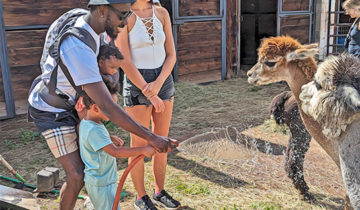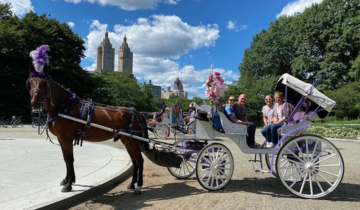Travel attractions and holiday tips and tricks in Side today: These days, Side Kemer is more famous for its sun and sand than its ancient history. During the summer months of endless blue skies, European travelers flock to the town to flop out on the sand of the many beaches lining the surrounding coast. The closest, and most popular, strip of sand, though, is right in town. East Beach is a buzzing place packed with sun loungers, restaurants, and cafés, and offers everything you need for a full day of sunning, relaxing, and topping up the tan. If you’re looking for a little more action, you’ll also find water sports galore on offer here. For a picnic spot away from the beach, you can’t beat the Manavgat Waterfalls, about 13 kilometers northeast of Side Kemer. The waterfalls sit upon the Manavgat River, which rises in the Seytan Mountain Range of the Taurus Mountains. Set amid a landscaped garden, the area is hugely popular with both local families and tourists on sunny weekends. Try to pick a weekday for a visit if you’d prefer the site to be less crowded. You can walk right up to the falls using a network of gangways to get close-up views. The thunderous roar of the water is a dramatic soundtrack to a visit here. Combine a visit to the waterfalls with some history with the 5 in 1 Best of Antalya Region Tour, which packs in the major highlights of the area in a full-day tour. This tour from Antalya visits the waterfalls first before guided tours of both the Perge and Aspendos ruins. The tour then travels on to Side Belek for guided tours of the theater ruins area and the Temples of Apollo and Athena. Lunch, all entry fees, and transport are included. Find additional details at Alanya excursions.
Camlik village takes 20 minutes drive from Kusadasi. A visit to the Village can be added to the “Ephesus and Kirazli Village” Tour Program. This is an outdoor museum was opened in 1991. It has one of the largest steam engines collection in Europe, most them joining the museum shortly after being retired from service. The museum is perfectly located, a few minutes away from Turkey most famous historical site: Ephesus. It sits on the premises of the former Çamlık station. A visit to Camlik steam engine museum is recommended for travellers wo are interested in steam engines and railways. Tire is 60 kilometers away from Kusadasi. Every Tuesday there is a farmers market held in downtown Tire. This is the largest farmers market in Turkey. You see farmers from several villages nearby selling their products.
Silk Worm Cocoon in the Culture House in Alanya in Turkey: This structure serves as Alanya Municipality Culture and Social Affairs Department and the Alanya Castle Site Management Office. It’s also known as Hamamlı Ev (Bath House) due to the historical bath on the ground floor. This traditional Alanya house was built with quarry stone and a lathing wood system. It used grog and haired plaster, specific to the region in the early 20th century. It was restored according to its original form after it was assigned to the Alanya Municipality by its owners.
The Alanya Seljuk Shipyard stands south of the Red Tower. You can easily reach it on foot by following the 300 meter path. The Alanya Seljuk Shipyard was built by the Seljuks in 13th century. If you are into maritime history and medieval buildings, make time to visit the only remaining shipyard in Turkey from the Seljuk Period. The Alanya Seljuk Shipyard (Tersane) has been used for trade and protection purposes throughout history. Today, it stands upright back to back with Red Tower. The Alanya shipyard is the only shipyard that remains from the Seljuk reign, built in the first half of 13th century.
Located right next to the Celsus Library, the square is the city’s most important trade and cultural center, Agora, which is the marketplace. Agora has a total of 3 doors, and was built in BC. It was founded in the 3rd century during the reign of Emperor Augustus. Agora was damaged due to a big earthquake in the 4th AC. century and became unusable. In the 6th century AC, a new agora was established in the northern part using the remains here. The section where the newly established agora is located today serves as the Gendarmerie barracks center and entrance to that area is prohibited.
When the Seljuk’s took control of this region in the 13th century, they built on the foundations of previous rulers. Much of the remaining building works still standing today in the castle area date from this period, when Alanya became a commercial hub. The lower castle area, nearest to the entrance gate, is known as the Ehmedek neighborhood. Wander the alleyways of red-roofed Ottoman-era houses and historical buildings here, then follow the winding lanes up to the Iç Kale (the castle’s inner fortress) for older Seljuk and Byzantine ruins plus views that soar across the sea, the coastal plateau, and the peaks of the Taurus Mountains beyond. Read more details on https://www.tourmoni.com/.
The city’s steep peninsula, protected on three sides by the Mediterranean, is topped by a 13th-century castle with 6.5 kilometres of fortified walls. This rocky mass is a natural defence, and today’s castle was built on earlier Hellenistic, Roman and Byzantine enclosures. In all there are 83 towers and 140 towers in the walls, and many of the 1,200 original cisterns continue to fulfil their original role. Alanya Castle is one massive archaeological site that warrants hours of exploration. The starting point has to be the citadel or Kale on the southwest side, where you’ll come to the Byzantine Church of St George, later adapted as a mosque. The north side of the promontory is the scene of the Seljuk Ehmedek Fortress, built on Hellenistic vestiges and holding a military garrison, arsenal and Sultan’s treasury for hundreds of years. Here you’ll discover countless ruins, together with historic 19th-century houses that went up after the castle had lost its defensive purpose.
Waterfall and swimming hole in Sapadere Canyon: Sapadere Canyon, on the outskirts of the small village of Sapadere, is an easy trip from Alanya, sitting just 20 kilometers inland from the city. From May to October, plenty of tour operators in Alanya run daily jeep tours to Sapadere Canyon, which are good for travelers who want to sit back and enjoy the scenery. Although small, only stretching for 800 meters in length, Sapadere Canyon is squeezed between high walls that reach up to 400 meters high. This gives the canyon a cooler climate than along the coast and makes it an extremely popular destination in the height of summer. A walkway leads through the canyon, passing a few shady cafés, where you can relax and enjoy the canyon environment. At the bottom of the canyon is a small lagoon and waterfall. Most people come to swim here in the cold, blue-green water of the lagoon and enjoy the cooler temperatures.
In 1228 the Anatolian Seljuk Sultan Kayqubad I ordered the construction of this remarkable shipyard, facing east across the bay, just south of Kızılkule. In Medieval times Alanya was the Seljuk Empire’s prime shipyard on the Mediterranean, and what remains is in great condition and open to the public for free along a wooden boardwalk. There’s a row of five pointed arches, more than 55 metres long in total, and these vaulted bays go back 44 metres inland. The shipyard was oriented east to get as much sunlight as possible, and is flanked by a mosque and guardroom. Slightly back and posted on the rocks on the south side is a defensive tower once armed with cannons.



